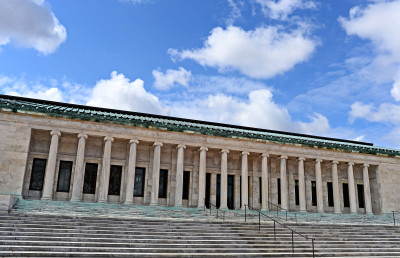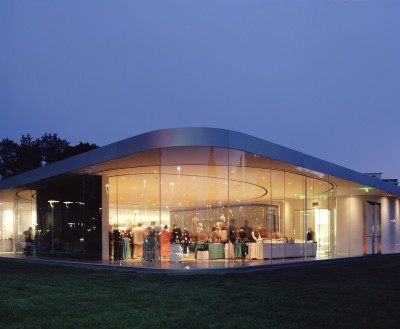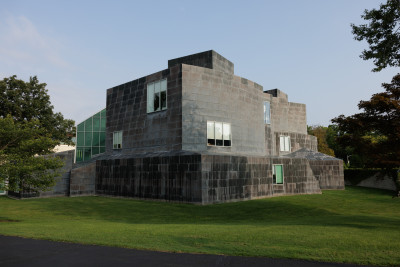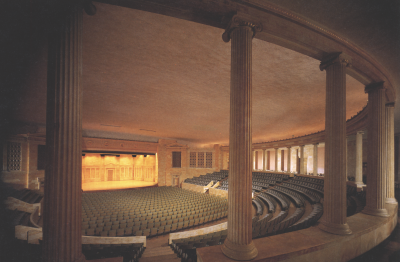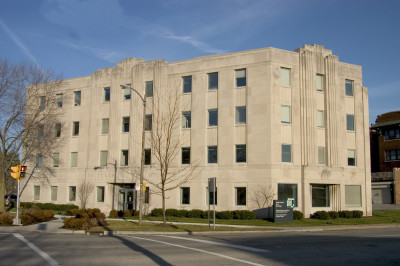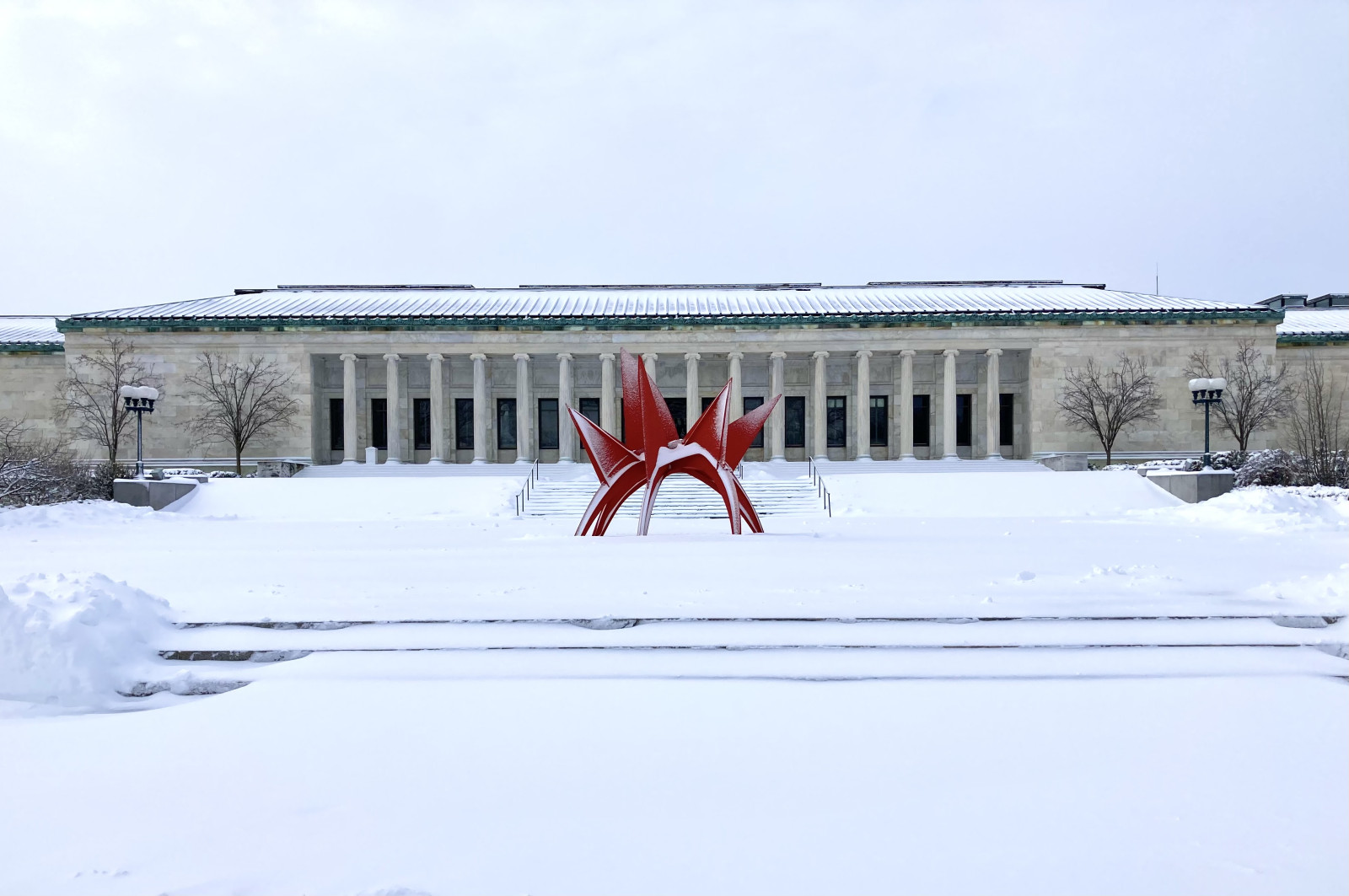Green Building
Since 1912, the Toledo Museum of Art’s Greek Ionic façade has graced the city as both landmark and legacy. The distinguished low and horizontal white marble building, designed by Edward B. Green and Harry W. Wachter, is articulated by a row of 16 columns, a copper roof, and a frieze of acanthus leaves. It has been renovated and expanded four times since then.
The colonnaded east and west wings are embellished with large, terraced staircases, an expansive lawn, and the TMA sculpture garden composed of exterior objects of art.
